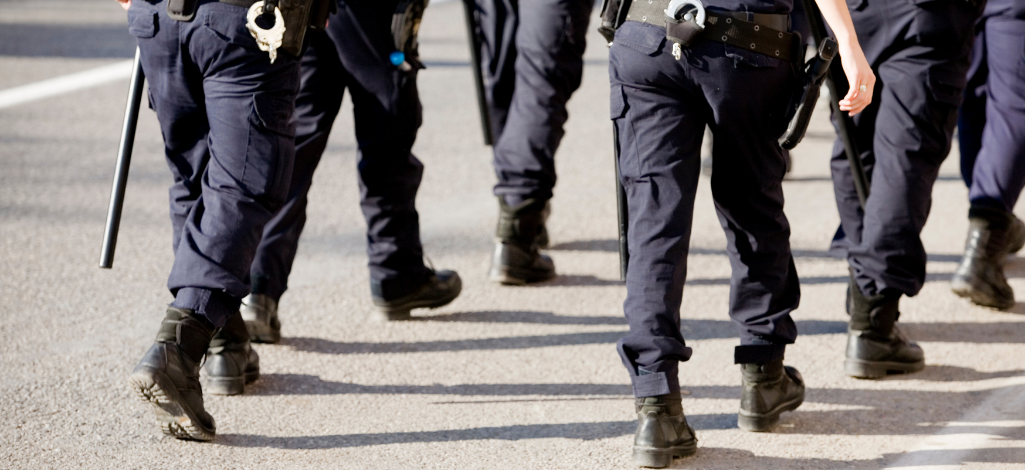OVERVIEW
Use-of-force cases generally turn on whether the impugned force was justified under section 25 of the Criminal Code. More specifically, use-of-force cases turn on what the subject officer observed or knew about the circumstances and how their observations and knowledge factored into the decisions they made about force.
In Canada, the courts have accepted that, at times, police must resort to force to complete an arrest or prevent an offender from escaping police custody; however, the allowable degree of force to be used remains constrained by the principles of proportionality, necessity and reasonableness. To assess proportionality, necessity and reasonableness, the courts rely on what the subject officer observed or knew at the time the force was used to determine if the officer’s actions were objectively necessary and reasonable in the circumstances.
In R v. Tranter, 2022 ONCJ 51, the Ontario Court of Justice considered these principles in a criminal case involving use of force by a staff sergeant in an Ontario detachment. Staff Sergeant Paul Tranter was charged with assault causing bodily harm, contrary to s. 267 of the Criminal Code, after he punched Jamie McFadyen in the face and upper torso while Mr. McFadyen was being booked into the detachment after his arrest. Video footage of the incident showed several officers struggling with Mr. McFadyen on the floor in front of the booking desk when Sgt. Tranter approached and punched Mr. McFadyen. Mr. McFadyen suffered fractures to the right side of his face, including a broken nose and orbital bone under his right eye.
FACTS
Mr. McFadyen was arrested for public intoxication, handcuffed and placed in the back of a police cruiser and taken to the police station by two constables on patrol. At the police station, Sgt. Tranter observed Mr. McFadyen being escorted down a ramp toward the booking desk where he was standing beside another constable who made a comment that led him to assume she had prior dealings with Mr. McFadyen. Sgt. Tranter then witnessed Mr. McFadyen stop and back into the path of one of the escorting officers and believed he had bumped the escorting officer into the wall. Based on his training, Sgt. Tranter formed the belief that Mr. McFadyen, who was cuffed from behind, was trying to access something on the officer’s duty belt, including the officer’s weapons and or firearm. Mr. McFadyen stopped and bumped the officer a second time before he reached the booking desk where Sgt. Tranter was standing.
At the booking desk, Mr. McFadyen turned towards the escorting officer and began pushing him backward toward a wall using his upper body and left shoulder. The escorting officer and two other constables managed to restrain Mr. McFadyen up against the wall next to the doorway. Mr. McFadyen, although controlled, continued to resist and swore at the officers angrily. Sgt. Tranter came out from behind the booking desk and started speaking to Mr. McFadyen in a calm voice to de-escalate the situation. Mr. McFadyen did not mirror his tone and instead directed his anger toward the escorting officer making references to the officer’s heritage. Sgt. Tranter went back behind the booking desk and the escorting officer began to remove the handcuffs from Mr. McFadyen in a further effort to de-escalate the situation. As he uncuffed Mr. McFadyen’s right wrist, Mr. McFadyen began pulling his left arm away and kicked back at one of the assisting officers. He then turned toward the escorting officer in a fighting stance. The escorting officer took Mr. McFadyen to the ground onto his back in front of the booking desk. Sgt Tranter came out from behind the booking desk and observed four officers struggling on the ground to gain control of Mr. McFadyen.
While the officers struggled on the ground to gain control of Mr. McFadyen, Sgt. Tranter approached, dropped to his knees and administered four quick blows to Mr. McFadyen’s head/upper torso area in the span of 3 seconds followed by a pause of approximately 2 seconds and then two more quick blows. In total, the time between the first and last blow was approximately 5-6 seconds.
SECTION 25 OF THE CRIMINAL CODE
At trial, the only matter at issue was whether the force used by Sgt. Tranter was justified under section 25 of the Criminal Code. More specifically, did Sgt. Tranter act on reasonable grounds in using as much force as was necessary to accomplish what he was authorized or required to do as a police officer?
Sgt Tranter testified in his own defence at trial. He testified that he administered the blows in defence of the escorting officer based on the following:
- Mr. McFadyen grabbed at the neck area of the escorting officer and pulled him down to one knee;
- he heard the escorting officer say “don’t choke me”; and
- while holding onto the escorting officer with his left hand, Mr. McFadyen had his right hand cocked in a fist.
Based on the totality of the circumstances leading up to that point in time, Sgt. Tranter said he believed Mr. McFadyen was going to punch the escorting officer and possibly cause an injury to his neck. Sgt. Tranter said he made a split-second decision to administer blows in quick succession to eliminate the risk as quickly as possible. Sgt. Tranter said he stopped when Mr. McFadyen went from being assaultive to defending himself and said words to the effect of “okay, okay, I give up”. At that point, Sgt. Tranter believed they had gained control of Mr. McFadyen. Sgt. Tranter’s description of the incident was corroborated by the video and the officers.
The Crown conceded Sgt. Tranter honestly believed that the force he used was necessary, reasonable and proportionate such that the only issue at trial was whether his belief was objectively reasonable in all the circumstances. Justice Orsini found it was and found Sgt. Tranter not guilty.
In his reasons for judgement, Justice Orsini noted this was not a case where Sgt. Tranter appeared to be responding out of anger or frustration or impatience. Rather, the video and audio recordings showed that Sgt. Tranter was calm and otherwise unfazed by what was occurring until immediately before administering the blows. From an objective standpoint, Justice Orsini found the circumstances that justified Sgt. Tranter in using force to prevent an assault upon the escorting officer included the following:
- Mr. McFadyen was under arrest for being intoxicated in a public place and presented as such;
- Mr. McFadyen was, at the very least, resistant to the direction of the escorting officer while being escorted down the hallway towards the booking desk;
- while Mr. McFadyen was likely the subject of a pat-down search when arrested, he had not undergone a full search of his person;
- Mr. McFadyen was verbally and physically assaultive when he first arrived at the booking desk and had to be restrained against the back wall;
- Mr. McFadyen’s assaultive behaviour was directed towards the escorting officer in particular;
- Mr. McFadyen refused to respond to verbal tactics aimed at calming him down;
- Mr. McFadyen became resistant and assaultive towards the escorting officer when the handcuffs were being removed resulting in him being physically grounded;
- at the time, the escorting officer was wearing his duty belt which included his firearm;
- Mr. McFadyen continue to resist officers and was effectively fighting the officers on the floor in front of the booking desk;
- Mr. McFadyen was approximately 5’8”- 5’9” and weighed approximately 220 lbs. He was angry, aggressive and exhibiting significant strength;
- despite being outnumbered by 4 other officers, Mr. McFadyen was difficult to control;
- Mr. McFadyen used his left hand to grab at the neck area of the escorting officer’s vest and pull him down. While doing so, he had his right arm pulled back with his hand in a fist as if to punch the escorting officer; and
- immediately prior to this, the escorting officer could be heard telling Mr. McFadyen not to touch his neck/throat area.
Justice Orsini rejected the Crown’s submission that the number of blows was excessive in the circumstances because:
- there was no concrete evidence as to how many of the blows landed;
- the force was applied over a very short period, consisting of six short punches in approximately 5-6 seconds; and
- Sgt. Tranter stopped punching when the risk to the escorting officer had been eliminated.
Justice Orsini also considered the relative speed with which matters unfolded. He found Sgt. Tranter did not have the benefit of time after he heard the escorting officer tell Mr. McFadyen not to touch his throat/neck area. Sgt. Tranter also saw Mr. McFadyen reach for that area and pull the officer down.
Interestingly, Justice Orsini declined to rely on expert evidence on police use of force training given the Crown concession that Sgt. Tranter honestly believed that the force he used was necessary, reasonable and proportionate. Expert evidence on use of force training is relevant to an officer’s honest belief in what constitutes reasonable force, but it is not probative for a determination of what is objectively reasonable. In that regard, Justice Orsini held that police training should correspond to what the court considers objectively reasonable and not the other way around.
CONCLUSION
Sgt. Tranter’s case reiterates that, in use-of-force cases, whether criminal or civil, officers must be able to articulate with adequate specificity how the observations they made and their knowledge of the circumstances at the time the force was used – including facts known to them about the specific offender’s behaviour or offender behaviour generally – factored into their decision to use the force at issue. Justice Orsini’s comments about Sgt. Tranter’s calm demeanor and efforts to deescalate the situation prior to using force also provide important direction to officers as to how the courts consider officer conduct generally when assessing objective necessity and reasonableness.
For more information, please contact a member of our Police Law and Liability Group.




